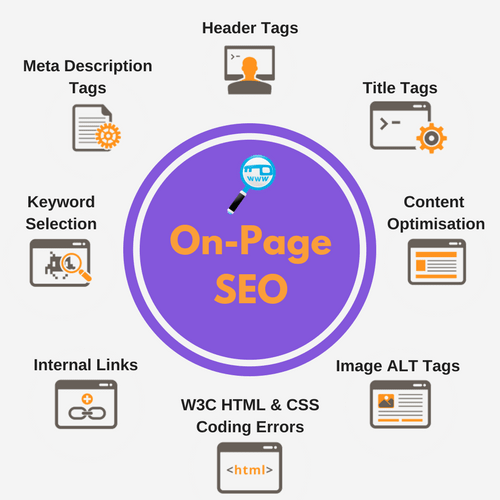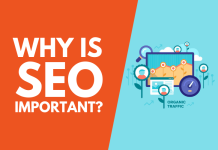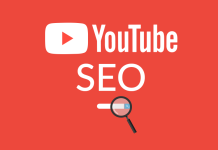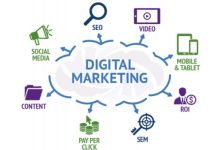Power of On-Page SEO: A Comprehensive Guide
Comprehensive Guide to On-Page SEO Mastery
Welcome to the comprehensive guide to mastering On-Page SEO! In the digital landscape, understanding and implementing On-Page SEO techniques are pivotal for enhancing website visibility and ranking. This guide will delve into the essentials, offering insights into the significance of On-Page SEO, its crucial elements, and more.
What is On-Page SEO?
On-page SEO refers to the optimization strategies implemented directly on a website to enhance its search engine visibility and improve organic traffic. It involves various practices aimed at improving content quality, relevance, and technical aspects to align with search engine algorithms.
Importance of On-Page SEO
On-page SEO is fundamental for website success, as it directly influences how search engines comprehend and rank content. Effective On-Page SEO ensures that a website is easily accessible, provides valuable content, and aligns with user intent, ultimately driving more organic traffic.
Overview of Article Sections
This guide is structured to provide an in-depth understanding of On-Page SEO. We’ll cover essential aspects such as understanding On-Page SEO, creating SEO-optimized content, and exploring technical elements that contribute to success. Let’s dive into the core components that make up On-Page SEO!

Understanding On-Page SEO
Understanding the foundational principles of On-Page SEO is crucial for optimizing your website effectively.
Defining On-Page SEO
On-page SEO involves a range of practices that website owners and content creators implement directly on their sites. It includes optimizing various elements such as meta tags, headings, URL structure, content, internal links, and images to improve search engine visibility and user experience.
Components of On-Page SEO
The key components of On-Page SEO encompass multiple elements:
Meta Tags:
Meta tags, including meta titles and descriptions, provide concise information to search engines about the content of a web page. Crafting compelling meta tags with relevant keywords is vital for increasing click-through rates in search results.
Headings and Content Optimization:
Headings (H1 to H6) offer structure to content, making it scannable and easy to comprehend. Optimizing content with relevant keywords and providing valuable, well-organized information enhances both user experience and search engine visibility.
URL Structure:
A clear, concise, and keyword-rich URL aids search engines in understanding the content and purpose of a web page. User-friendly URLs contribute to better indexing and ranking.
Internal Linking:
Strategic internal linking between pages within a website aids in establishing site architecture and spreading link equity, improving page authority and user navigation.
Images and Multimedia Optimization:
Optimizing images with descriptive file names, alt text, and relevant captions not only enhances user experience but also contributes to search engine visibility through image searches.
Keyword Research and Optimization
Keyword research is the cornerstone of On-Page SEO. It involves identifying terms and phrases users are searching for and strategically integrating them into website content. Optimizing content with relevant keywords in a natural and informative manner enhances the chances of ranking for specific search queries.
Creating SEO-Optimized Content
Crafting high-quality, SEO-optimized content is pivotal for effective On-Page SEO strategies.
Content Quality and Relevance
Producing high-quality, relevant content that caters to the audience’s needs is at the core of On-Page SEO. Content should be informative, engaging, and aligned with user intent, ensuring it adds value and resonates with the target audience.
Structuring Content for SEO
The structure of content plays a significant role in its readability and search engine optimization. Employing proper headings, subheadings, and formatting techniques can enhance content readability and search engine comprehension. Organizing content with short paragraphs, bullet points, and relevant media improves user experience and SEO.
Optimizing for Featured and Rich Snippets
Featured snippets display concise answers to user queries at the top of search results, attracting more visibility. Optimizing content for snippets involves providing direct and comprehensive answers to commonly asked questions. Rich snippets, such as reviews, ratings, and images, enhance the appearance of search results, making them more attractive and informative.
Technical Aspects of On-Page SEO
Understanding the technical elements of On-Page SEO is crucial for enhancing a website’s performance and visibility.
Mobile Optimization and Responsiveness
In an era dominated by mobile users, ensuring a website is mobile-friendly and responsive is paramount. Mobile optimization improves user experience and is favored by search engines, impacting a site’s ranking.
Page Speed and Loading Times
Page speed directly influences user experience and search engine rankings. Optimizing a website for faster loading times not only enhances user satisfaction but also positively impacts search engine visibility.
Technical SEO Best Practices
Implementing technical best practices like structured data, XML sitemaps, and canonical tags aids search engines in understanding a website’s content and structure. These practices contribute to better indexing and improved relevance in search results.
Measuring On-Page SEO Success
Understanding how to measure and track the effectiveness of On-Page SEO strategies is crucial for continuous improvement.
Tools for Monitoring and Evaluation
Various tools, such as Google Analytics, Google Search Console, and third-party SEO tools, provide insights into website performance. These tools offer metrics like organic traffic, click-through rates, keyword rankings, and user behavior, enabling website owners to monitor and refine their SEO strategies.
Key Metrics and KPIs
Key Performance Indicators (KPIs) such as organic traffic, conversion rates, bounce rates, and average session duration help evaluate the success of On-Page SEO efforts. Analyzing these metrics aids in understanding user engagement and the impact of SEO strategies on website performance.
On-Page SEO Trends and Best Practices
Staying abreast of evolving trends and best practices in On-Page SEO is crucial for maintaining a competitive edge.
Voice Search and On-Page SEO
As voice search continues to gain prominence, optimizing content for voice queries becomes essential. Structuring content to address conversational queries and providing direct, concise answers can significantly impact a website’s visibility in voice search results.
User Experience and SEO
Enhancing user experience through intuitive navigation, fast load times, and mobile responsiveness directly impacts a website’s SEO. Search engines prioritize websites that offer a seamless and engaging user experience.
E-A-T (Expertise, Authoritativeness, Trustworthiness)
Focusing on E-A-T principles is pivotal for establishing credibility and trust with both users and search engines. Providing accurate and valuable content created by experts contributes to higher rankings.
FAQs on On-Page SEO
How important are meta descriptions in On-Page SEO?
Meta descriptions provide a summary of a webpage’s content and play a crucial role in enticing users to click through to the site. While they don’t directly influence rankings, compelling meta descriptions can improve click-through rates.
Does keyword density still matter in content optimization?
Keyword density, or the frequency of a keyword within content, is no longer a primary factor. Instead, focusing on the natural and contextually relevant use of keywords is more significant for content optimization.
What are the best practices for optimizing images on a website?
Optimizing images involves using descriptive filenames, adding alt text, and compressing images without compromising quality. These practices improve accessibility and enhance a website’s visibility in image searches.
Is mobile-first indexing crucial for On-Page SEO success?
Mobile-first indexing is vital as Google predominantly uses the mobile version of a site for ranking and indexing. Ensuring a mobile-friendly website is essential for On-Page SEO success.
What role does user experience play in On-Page SEO?
User experience significantly impacts SEO. A well-structured, user-friendly site that loads quickly and provides valuable content positively influences search engine rankings.
The FAQs section addresses common queries related to On-Page SEO, providing concise and informative answers to aid understanding. The included questions cover key areas such as meta descriptions, keyword density, image optimization, mobile-first indexing, and the impact of user experience on SEO.
Conclusion
In conclusion, mastering On-Page SEO is pivotal for achieving higher search engine visibility and attracting organic traffic. This comprehensive guide has explored the fundamental elements of On-Page SEO, including content optimization, technical aspects, measurement of success, evolving trends, and best practices. Implementing these strategies will undoubtedly elevate a website’s ranking and improve its overall performance in search results.
The conclusion summarizes the importance of mastering On-Page SEO and implementing the strategies discussed in the article. It aims to encourage the practical application of the insights gained throughout the guide.




